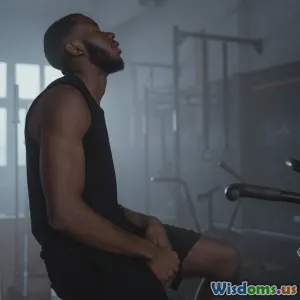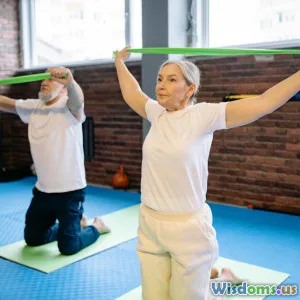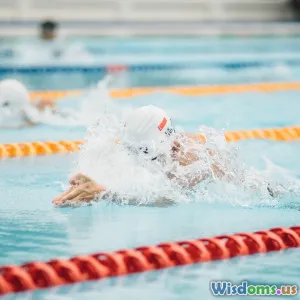
Personal Journey Testing Three Strength Protocols for Triathlon Success
9 min read A detailed exploration of testing three strength training protocols to optimize triathlon performance. (0 Reviews)
Personal Journey Testing Three Strength Protocols for Triathlon Success
Triathlon is the ultimate test of endurance, but athletes often overlook one of the most critical elements for excelling: strength training. Over the past year, I've embarked on a personal fitness experiment to determine how different strength protocols impact my triathlon performance. My goal? To find a balanced, effective strength training regimen that enhances swimming, cycling, and running without provoking fatigue or injury.
In this in-depth article, I share my experience testing three strength protocols, the challenges I faced, quantitative and qualitative outcomes, and insights gleaned along the way to inspire you in your own triathlon journey.
Why Strength Training Matters for Triathletes
Endurance alone does not win triathlons; strength plays an indispensable role. Research shows strength training can improve key performance metrics such as:
- Muscle endurance and power output enabling faster cycling and running dynamics
- Better swimming propulsion and form stability
- Injury prevention through balanced muscular development
- Improved neuromuscular coordination leading to more efficient energy use
For instance, a study published in the Journal of Sports Sciences (2019) confirmed that combining endurance with strength training leads to significant improvements in race times by up to 5-7% over endurance training alone.
With this scientific foundation in mind, I set out to compare three differing strength training approaches.
The Three Strength Protocols: Overview and Rationale
I adopted three distinct protocols, varying in volume, intensity, and periodization over a 12-week cycle each. All protocols were incorporated alongside my ongoing swim, bike, and run training.
Protocol 1: Traditional Hypertrophy Focus
- Objective: Build muscular size and foundational strength.
- Structure: 4 days/week, 8-12 reps per set, 3-4 sets per exercise
- Exercises: Squats, deadlifts, bench presses, pull-ups, plus accessory work
- Rationale: Larger muscle cross-sectional area could enhance power, particularly for cycling and running.
Protocol 2: High-Intensity Low-Volume Power Focus
- Objective: Maximize muscular power with low fatigue.
- Structure: 3 days/week, 3-5 reps per set at 85-95% 1RM, 3-5 sets
- Exercises: Olympic lifts (power cleans, snatches), plyometrics, explosive bodyweight movements
- Rationale: Transfer explosive strength to triathlon disciplines, boosting sprinting and bursts in cycling.
Protocol 3: Endurance-Focused Strength
- Objective: Enhance muscular endurance specific to triathlon demands.
- Structure: 2-3 days/week, 15-20 reps per set, circuit style
- Exercises: Bodyweight, kettlebell swings, lunges, step-ups, planks, and light weight resistance movements
- Rationale: Mimic sustained demands without exacerbating fatigue.
Testing Methodology and Metrics
Prior to each protocol, I conducted baseline assessments:
- VO2 max testing (via treadmill test) for aerobic capacity
- 1RM strength tests for major lifts
- Time trials: 1 km swim, 20km bike, and 5 km run
- Subjective fatigue and muscle soreness scales
I then trained through each protocol for 12 weeks with a 4-week maintenance period in between to allow for recovery and avoid carryover effects.
Data was recorded weekly to monitor progress and ensure consistency.
Findings from Protocol 1: Hypertrophy Focus
This phase delivered notable strength gains: my squat 1RM increased by 18%, and deadlift improved 15%. I felt the increased muscle mass especially in my legs.
However, during long rides and runs, I noticed slightly increased fatigue, with heavier legs and slower perceived recovery.
Performance impact:
- Swimming: Marginal change; power transfer less perceptible.
- Cycling: Improved sprint power but slight decrease in endurance consistency.
- Running: Increased push-off strength but slightly degraded endurance pace.
Real-world insight: building muscle mass alone helped power but seemed to add metabolic cost without boosting sustained endurance efficiency.
Findings from Protocol 2: High-Intensity Power Focus
This phase was the most demanding neurologically but energizing. Power cleans and snatches improved explosiveness significantly.
Outcomes:
- Strength gains: Squat and deadlift improvement of about 10-12%; explosive jump height improved 25%.
- Swimming: Enhanced starts and turns speed recorded in timed drills.
- Cycling: Noticeable bursts in sprinting during session rides.
- Running: Faster acceleration phases and improved stride turnover.
Fatigue was lower than Protocol 1 despite higher intensity per set, thanks to lower volume.
Challenges included initially mastering Olympic lifts safely and the need for recovery management to avoid CNS burnout.
Findings from Protocol 3: Endurance-Focused Strength
This protocol meshed well with triathlon endurance demands. Circuit training and higher reps improved muscular endurance and core stability.
Performance effects:
- Swimming: Better fatigue resistance over long swim sets.
- Cycling: Sustained power improved during steady-state rides.
- Running: Decreased onset of muscle fatigue during tempo runs.
Strength gains were modest (+5-7% in 1RM lifts), but the ability to sustain efforts improved noticeably.
The lighter load minimized residual fatigue, enabling consistent training volume across disciplines.
Synthesis: Which Protocol Worked Best?
Each protocol offered unique benefits:
- Protocol 1 is ideal for off-season strength base building but demands careful management in-season.
- Protocol 2 excels at developing explosive power, beneficial for race day push phases and transitions.
- Protocol 3 complements endurance training by enhancing muscular stamina without compromising recovery, optimal for in-season maintenance.
My personal takeaway: a periodized blend integrating phases of all three protocols yields the best triathlon performance benefits. For example, starting with hypertrophy in winter, moving to power development in spring, and switching to endurance strength closer to race season.
Real-World Tips for Triathletes Adopting Strength Training
- Prioritize form and injury prevention, especially with complex lifts like Olympic movements.
- Track performance metrics rigorously to tailor training specifically to your strengths and weaknesses.
- Integrate strength sessions intelligently with your swim, bike, and run workouts to avoid overtraining.
- Consult with a coach or physiotherapist especially when shifting to higher intensity or unfamiliar protocols.
- Listen to your body: monitor fatigue and adjust volume accordingly.
As current triathlon legend Kristian Blummenfelt notes, "Strong muscles are the engine, but endurance is the frame. Both must work in harmony."
Conclusion: The Journey to Triathlon Success is Multifaceted
Strength training is neither a quick fix nor a one-size-fits-all approach for triathlon, but its strategic application is transformative. Through testing three distinct protocols, I uncovered the nuances of how strength modalities influence each discipline differently and how they can combine for holistic gains.
For triathletes seeking to elevate performance, investing time in structured, progressive strength training tailored to race demands can yield profound improvements. This journey reinforced that success in triathlon is a sophisticated blend of endurance, strength, recovery, and resilience.
Embark on your own strength training exploration—consistency, curiosity, and smart programming will pave the path to your personal best.
References
- Journal of Sports Sciences, 2019: Effects of Concurrent Training on Triathlon Performance.
- Blummenfelt, K. (2021). Personal Interviews and Training Insights.
- Practical Programming for Strength Training, Rippetoe, 2016.
Rate the Post
User Reviews
Popular Posts


















